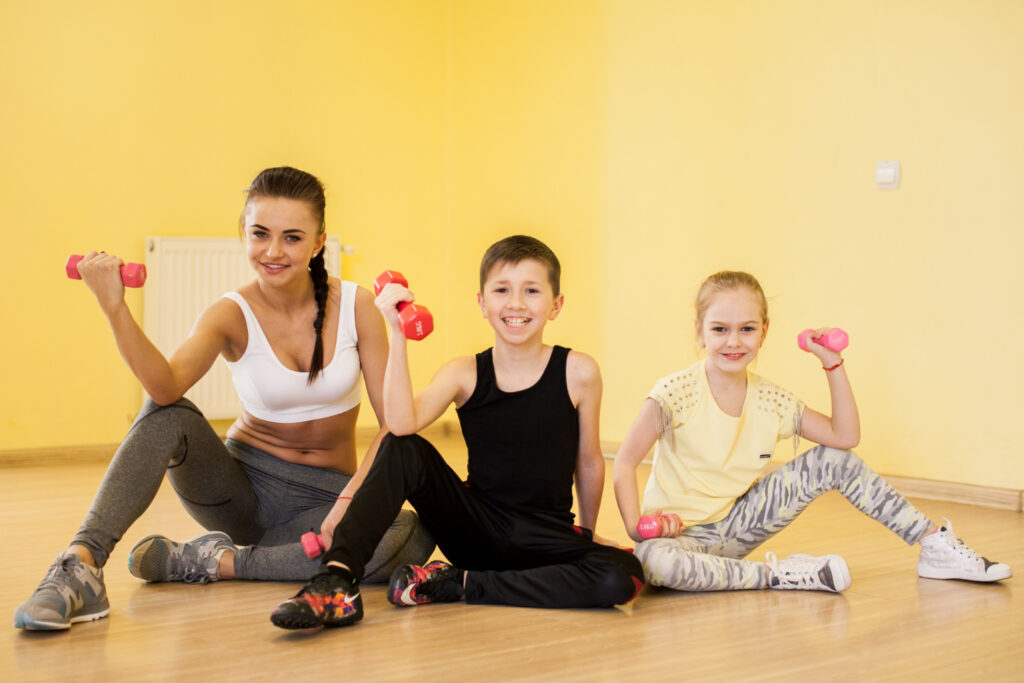Family fitness is crucial for collective well-being, fostering cohesion and vitality. This guide emphasizes the connection between physical activity and familial bonds, making it more than an individual pursuit. Benefits include improved communication, teamwork, and shared experiences that strengthen family ties.
Setting collective fitness goals propels family growth, providing purpose and direction. The guide offers practical tips for establishing a shared vision, breaking down milestones, and fostering accountability within the family.
It highlights the importance of tailoring fitness activities to diverse family interests, ensuring inclusivity. Approaching exercise as a source of joy and connection transforms it into a positive, shared experience.
Acknowledging the dynamic nature of family life, the guide provides insights into adapting fitness routines to evolving needs. Parental guidance is pivotal, with an emphasis on leading by example to instill a lifelong appreciation for a healthy lifestyle in children.

1: The Significance of Family Fitness
1.1 Why Family Fitness Matters
Explore the numerous benefits of prioritizing family fitness, from improved physical health to enhanced emotional well-being. Delve into studies highlighting the positive impact of shared physical activities on family relationships.
1.2 Building Stronger Bonds of Family Fitness
Discuss how engaging in fitness activities as a family fosters teamwork, communication, and mutual support. Highlight the unique opportunities for bonding that family workouts provide.
2: Setting Family Fitness Goals
2.1 Identifying Individual and Collective Goals
Guide families in identifying personal fitness goals for each member while also setting overarching family objectives. Discuss the importance of balance and inclusivity in goal-setting.
2.2 Creating a Realistic and Sustainable Plan
Offer practical advice on developing a fitness plan that accommodates varying fitness levels, schedules, and interests within the family. Emphasize the significance of consistency and adaptability.
3: Making Fitness Fun for the Whole Family
3.1 Incorporating Enjoyable Activities
Explore a variety of family-friendly fitness activities, such as hiking, biking, and interactive games. Provide recommendations for activities that cater to different age groups and interests.
3.2 Gamifying Workouts
Introduce the concept of gamification in family fitness, making exercise more enjoyable through challenges, rewards, and friendly competitions. Highlight apps and tools that can add an element of fun to workouts.
4: Turning Exercise into Quality Family Time
4.1 Scheduling Regular Family Workouts
Discuss the importance of scheduling dedicated family workout sessions and provide tips on how to make them a consistent part of your routine.
4.2 Incorporating Educational Elements
Explore how to turn exercise into a learning experience for children by incorporating educational elements, such as discussing anatomy, nutrition, and the importance of an active lifestyle.
5: Celebrating Achievements and Milestones
5.1 Acknowledging Individual and Collective Progress
Encourage families to celebrate both individual and collective achievements. Discuss the positive impact of acknowledgment on motivation and commitment.
5.2 Creating Family Fitness Traditions
Propose the establishment of family fitness traditions, such as an annual charity run or a monthly themed workout, to strengthen the sense of unity and accomplishment.
conclusion
transforming exercise into quality family time is not only achievable but also immensely rewarding. By setting and pursuing family fitness goals together, you not only enhance your health but also create a strong foundation for lasting family memories. Embrace the journey toward a healthier and more connected family lifestyle—one that celebrates both individual growth and collective well-being.
for more informations click here
for more articles click here




